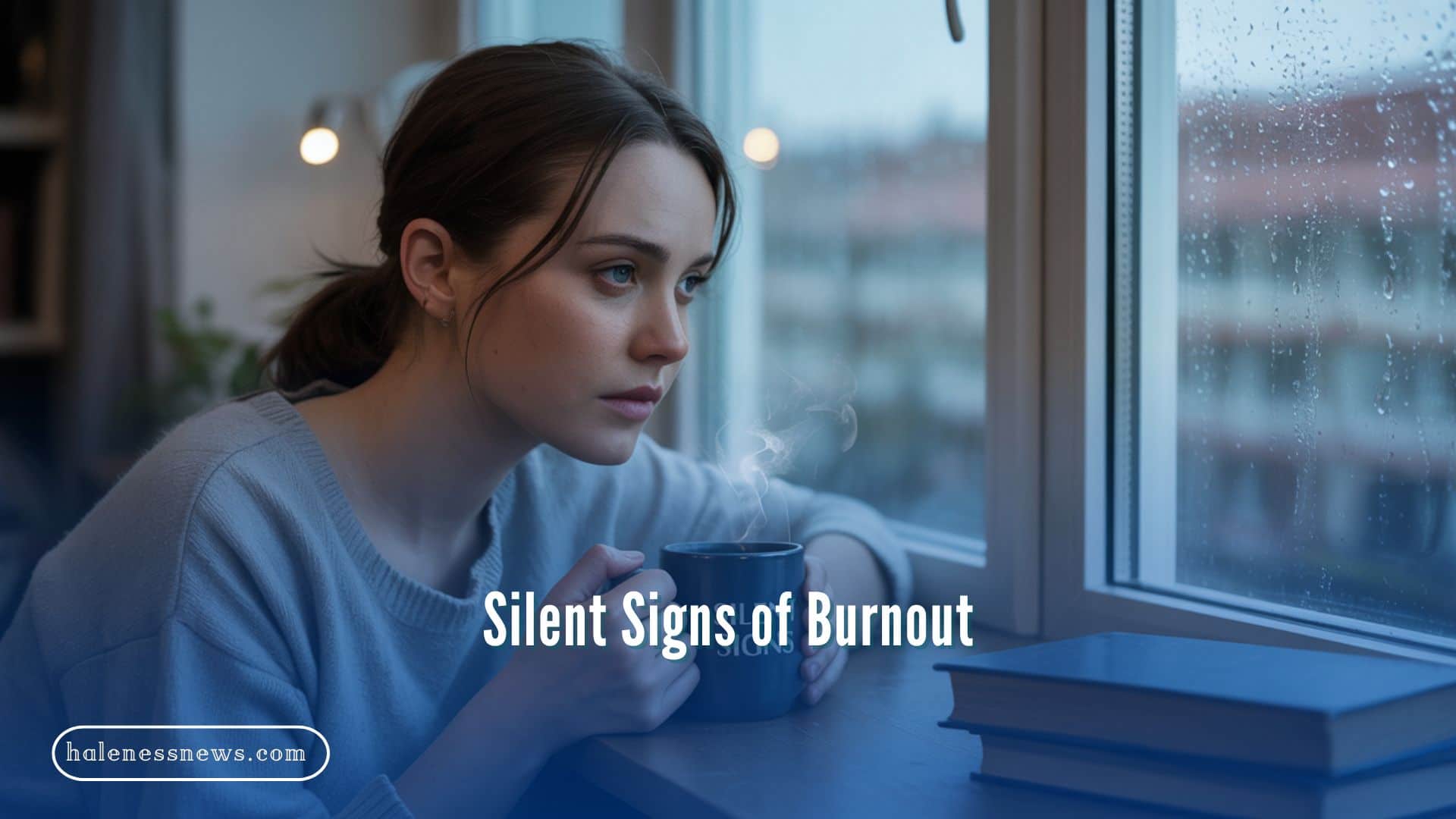Burnout doesn’t always hit like a storm. Sometimes, it arrives quietly—stealing your energy, clouding your thoughts, and changing your behavior without you realizing it. In today’s fast-paced, always-connected world, burnout has become increasingly common in the United States, especially among working professionals, parents, caregivers, and students.
While many people associate burnout with extreme exhaustion or quitting a job, it often begins with much subtler signals. Recognizing the silent signs of burnout is crucial for your mental, emotional, and physical well-being.
What Is Burnout?
Burnout is more than just feeling tired. It’s a state of chronic physical and emotional exhaustion caused by prolonged stress—especially from work or caregiving roles. The World Health Organization classifies burnout as an occupational phenomenon linked to:
- Energy depletion
- Increased mental distance from your job
- Reduced professional effectiveness
While it often relates to workplace stress, burnout can also result from overwhelming responsibilities at home, school, or in relationships.
Why Silent Signs Matter?
The early warning signs of burnout don’t shout—they whisper. You might push through your days, thinking it’s just a rough patch. But left unaddressed, these signals can escalate into full-blown burnout, depression, anxiety, or physical health problems.
That’s why it’s so important to catch burnout early. Below are the most overlooked but serious signs of burnout that many people in the U.S. face daily.
Top Silent Signs of Burnout — How to Recognize the Subtle Indicators?
1. Constant Fatigue, Even After Sleep:
If you sleep for 7–8 hours but still wake up tired, something deeper may be happening. One of the first signs of burnout is persistent fatigue that doesn’t go away with rest.
Why it happens: Chronic stress disrupts your sleep cycles and hormones, leaving your body in a constant state of fight-or-flight—even while sleeping.
Watch for:
- Trouble waking up
- Midday energy crashes
- Needing caffeine just to function
2. Mental Fog and Forgetfulness:
Another quiet red flag is cognitive decline—a struggle to think clearly, stay focused, or remember simple things.
Why it happens: When your brain is overwhelmed, your working memory and focus begin to suffer. Even tasks you once did easily may now feel mentally exhausting.
3. Loss of Motivation and Interest:
Are you suddenly uninterested in things you used to enjoy? Are your goals starting to feel meaningless?
Why it matters: This is more than a bad day. A sustained loss of motivation is often tied to emotional exhaustion and a sense of helplessness.
According to a 2023 Gallup report, 76% of American employees feel disengaged at work, and a major cause is burnout.
4. Emotional Numbness
Burnout doesn’t always show up as emotional outbursts. In many cases, it causes emotional detachment—you stop feeling much of anything.
You may feel like you’re just going through the motions, neither happy nor sad—just… blank. This can be especially dangerous because it often goes unnoticed.
5. Irritability and Mood Swings
Small things start to feel big. You might snap at coworkers, get frustrated with loved ones, or feel overwhelmed by minor inconveniences.
Common signs:
- Being short-tempered
- Overreacting to minor issues
- Feeling constantly on edge
6. Trouble Falling or Staying Asleep
One of the earliest and most common signs of burnout in American adults is sleep disturbance.
You might lie awake worrying, wake up often, or feel like your mind won’t turn off—even when you’re exhausted.
CDC Insight: Nearly 1 in 3 adults in the U.S. report short sleep duration, which is strongly linked to job stress and burnout.
7. Changes in Appetite or Eating Habits
Burnout can influence how much—and what—you eat.
You might skip meals because you’re too busy or overeat as a coping mechanism. Cravings for junk food or sugar may increase as your body seeks quick energy.
8. Social Withdrawal and Isolation
One silent signal that often goes unnoticed is pulling away from others—friends, coworkers, even family.
You may cancel plans, ignore texts, or prefer being alone because interaction feels too draining. While solitude can be healthy, chronic isolation isn’t.
9. Unexplained Aches and Pains
Burnout doesn’t only impact your mind—it also affects your body.
Common physical symptoms include:
- Tight shoulders and neck
- Headaches or migraines
- Stomach issues
- Jaw clenching or grinding
Stress can increase cortisol, which causes inflammation and physical discomfort.
10. Feeling Trapped or Hopeless
You may feel like you’re stuck in a loop—unable to escape your responsibilities or improve your situation.
This can lead to:
- Negative self-talk
- Feeling like nothing you do matters
- Questioning your career, relationships, or life choices
Who’s at Risk of Burnout in the U.S.?
Burnout doesn’t discriminate, but some groups are more vulnerable:
🔹 Healthcare Workers: Especially since the pandemic, American healthcare professionals report some of the highest burnout rates.
🔹 Remote and Hybrid Workers: Lack of boundaries between work and home life has led to higher levels of digital fatigue and constant availability.
🔹 Parents and Caregivers: Managing kids, elderly parents, or both—while working—puts many U.S. adults at risk of chronic stress.
🔹 College Students: Academic pressure, student loans, and social anxiety make students especially vulnerable.
🔹 Entrepreneurs and Freelancers: The “hustle culture” in the U.S. glorifies overwork, pushing many business owners toward hidden burnout.
Why Ignoring Burnout Is Dangerous?
Burnout can lead to:
- Clinical depression or anxiety
- Substance abuse
- Heart disease and hypertension
- Workplace errors and job loss
- Damaged relationships
Recognizing the silent signs early is key to prevention and healing.
How to Recover from Burnout?
Prioritize Rest and Recovery: Take real breaks. Step away from screens. Sleep more. Rest isn’t lazy—it’s essential.
Set Boundaries: Say no more often. Protect your time and energy, especially in work-from-home settings.
Talk to Someone: Whether it’s a therapist, friend, or coach, speaking openly can reduce emotional load.
Move Your Body: Exercise—even a short walk—can reset your nervous system and boost mood.
Nourish Yourself: Eat whole foods, stay hydrated, and avoid excessive caffeine or alcohol.
Reconnect with Joy: Rediscover hobbies, creativity, or moments of peace—whatever makes you feel alive again.
Burnout Statistics in the U.S. – 2025 Snapshot!
- 62% of American workers report high stress levels, according to the American Psychological Association.
- 44% say they feel emotionally drained from their work.
- 81% of Gen Z employees report burnout symptoms at least once a month.
- 1 in 5 U.S. adults say burnout has affected their physical health.
FAQs About Silent Signs of Burnout:
1. What are the first signs of burnout?
Common early signs include fatigue, brain fog, irritability, and sleep problems. These signs are often easy to ignore but can worsen quickly without intervention.
2. How is burnout different from stress?
Stress is short-term and can be productive. Burnout is chronic, overwhelming, and emotionally draining. Burnout often follows when stress becomes unmanaged for weeks or months.
3. Can burnout cause physical illness?
Yes. Burnout can contribute to serious health issues like heart disease, high blood pressure, and immune system weakness. Your body interprets chronic stress as danger, which eventually takes a physical toll.
4. Is burnout common in the U.S.?
Very. Millions of Americans across all professions experience burnout, especially since the COVID-19 pandemic increased workload and emotional stress. It’s especially prevalent in healthcare, education, tech, and caregiving roles.
5. Can I recover from burnout without quitting my job?
Yes. While some cases may require career changes, many people recover with boundaries, therapy, rest, and lifestyle changes. Small, consistent adjustments in your daily habits can lead to significant recovery.
6. Who can I talk to about burnout?
A licensed therapist, HR representative, wellness coach, or trusted mentor can provide guidance and support. The key is to speak up early—support is more effective when burnout is in its early stages.
Final Thoughts:
Burnout rarely shows up all at once. More often, it builds gradually—through little changes in how you think, feel, and function. The good news? It can be reversed. The first step is noticing the silent signs and acknowledging that your health matters more than your productivity.
You don’t have to wait for a crisis to make a change. Recognize the signs. Set boundaries. Choose rest. Seek support. Because your well-being isn’t a luxury—it’s a priority.





